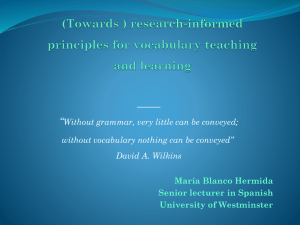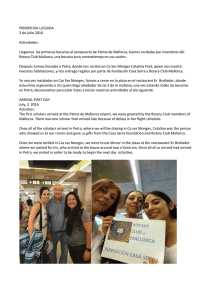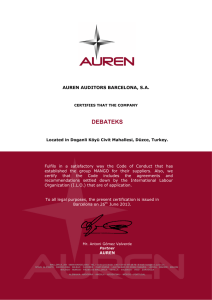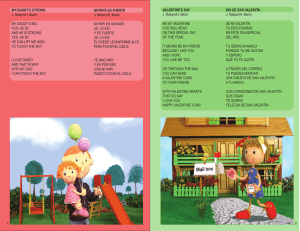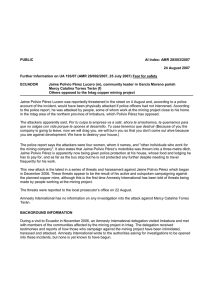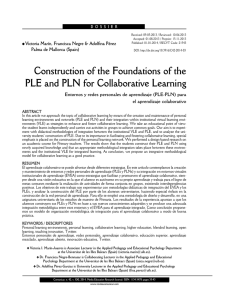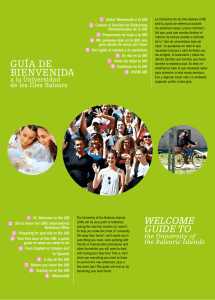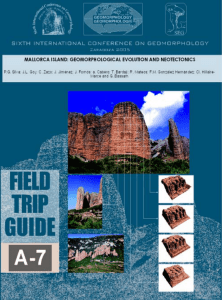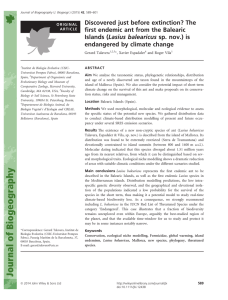Autonomous learning and use of technologies
Anuncio
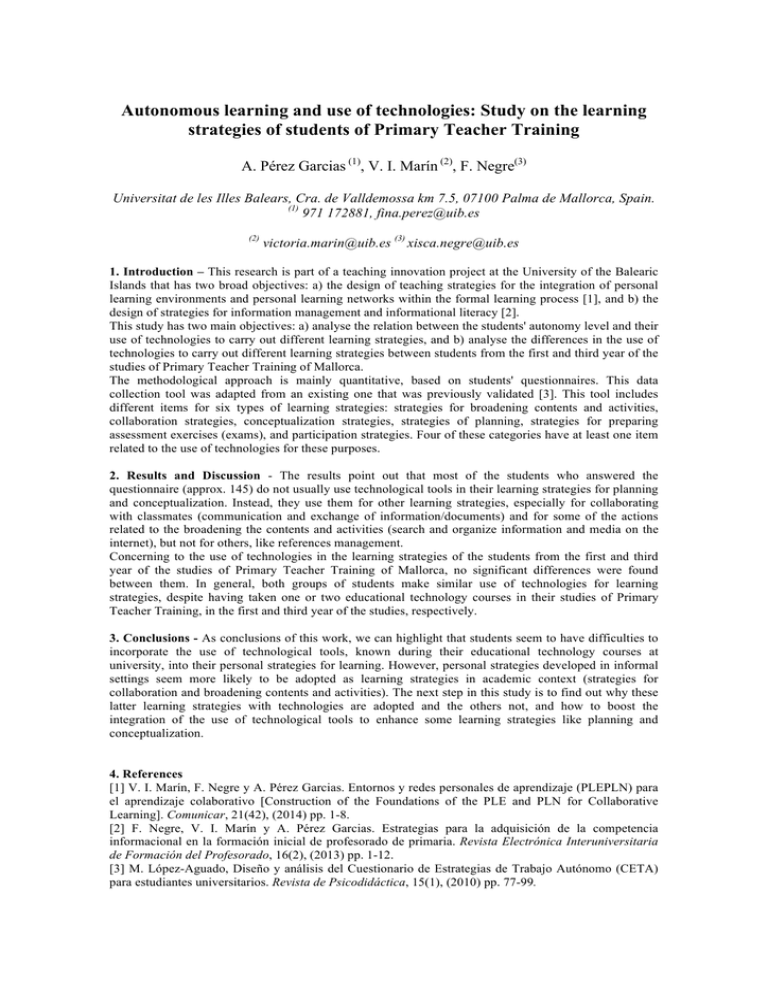
Autonomous learning and use of technologies: Study on the learning strategies of students of Primary Teacher Training A. Pérez Garcias (1), V. I. Marín (2), F. Negre(3) Universitat de les Illes Balears, Cra. de Valldemossa km 7.5, 07100 Palma de Mallorca, Spain. (1) 971 172881, fina.perez@uib.es (2) victoria.marin@uib.es (3) xisca.negre@uib.es 1. Introduction – This research is part of a teaching innovation project at the University of the Balearic Islands that has two broad objectives: a) the design of teaching strategies for the integration of personal learning environments and personal learning networks within the formal learning process [1], and b) the design of strategies for information management and informational literacy [2]. This study has two main objectives: a) analyse the relation between the students' autonomy level and their use of technologies to carry out different learning strategies, and b) analyse the differences in the use of technologies to carry out different learning strategies between students from the first and third year of the studies of Primary Teacher Training of Mallorca. The methodological approach is mainly quantitative, based on students' questionnaires. This data collection tool was adapted from an existing one that was previously validated [3]. This tool includes different items for six types of learning strategies: strategies for broadening contents and activities, collaboration strategies, conceptualization strategies, strategies of planning, strategies for preparing assessment exercises (exams), and participation strategies. Four of these categories have at least one item related to the use of technologies for these purposes. 2. Results and Discussion - The results point out that most of the students who answered the questionnaire (approx. 145) do not usually use technological tools in their learning strategies for planning and conceptualization. Instead, they use them for other learning strategies, especially for collaborating with classmates (communication and exchange of information/documents) and for some of the actions related to the broadening the contents and activities (search and organize information and media on the internet), but not for others, like references management. Concerning to the use of technologies in the learning strategies of the students from the first and third year of the studies of Primary Teacher Training of Mallorca, no significant differences were found between them. In general, both groups of students make similar use of technologies for learning strategies, despite having taken one or two educational technology courses in their studies of Primary Teacher Training, in the first and third year of the studies, respectively. 3. Conclusions - As conclusions of this work, we can highlight that students seem to have difficulties to incorporate the use of technological tools, known during their educational technology courses at university, into their personal strategies for learning. However, personal strategies developed in informal settings seem more likely to be adopted as learning strategies in academic context (strategies for collaboration and broadening contents and activities). The next step in this study is to find out why these latter learning strategies with technologies are adopted and the others not, and how to boost the integration of the use of technological tools to enhance some learning strategies like planning and conceptualization. 4. References [1] V. I. Marín, F. Negre y A. Pérez Garcias. Entornos y redes personales de aprendizaje (PLEPLN) para el aprendizaje colaborativo [Construction of the Foundations of the PLE and PLN for Collaborative Learning]. Comunicar, 21(42), (2014) pp. 1-8. [2] F. Negre, V. I. Marín y A. Pérez Garcias. Estrategias para la adquisición de la competencia informacional en la formación inicial de profesorado de primaria. Revista Electrónica Interuniversitaria de Formación del Profesorado, 16(2), (2013) pp. 1-12. [3] M. López-Aguado, Diseño y análisis del Cuestionario de Estrategias de Trabajo Autónomo (CETA) para estudiantes universitarios. Revista de Psicodidáctica, 15(1), (2010) pp. 77-99.
